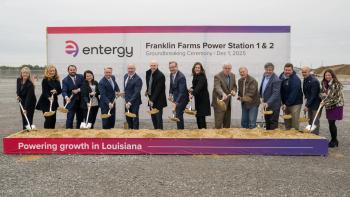
EIA power plant age
EIA figures show that the most recent waves of generating capacity additions in the US include natural gas-fired units in the 2000s and renewable units, primarily wind, coming online in the late 2000s.
About 530 gigawatts, or 51% of all generating capacity, were at least 30 years old at the end of 2010. Most gas-fired capacity is less than 10 years old, while 73% of all coal-fired capacity was 30 years or older at the end of 2010. The 'other' category includes solar, biomass, and geothermal generators, as well as landfill gas, municipal solid waste, and a variety of small-magnitude fuels such as byproducts from industrial processes (e.g., black liquor, blast furnace gas).
Despite much talk and publicity, coal build out has been marginal in the last 20 years. Following the gas boom in the early 2000 when over 50 GW of gas capacity was added year over year, new plant construction dropped down with renewables picking up some of the slack. And the overwhelming majority of the new plants built in the last decade are wind and renewables.
Between 2000 and 2010, 12 GW of coal plants were built. This represents a little under 5% of total coal fired capacity in the U.S. In the same period, over 235 GW of new gas-fired capacity was installed.
The downturn affected wind capacity addition, too. In 2009, nearly 10 GW was installed while that figure came down to around 3.5 GW in 2010.
At least 100 coal plants representing some 50 GW installed scrubbers between 2007 and 2009.
Capacity utilization of natural gas-fired plants has increased year over year. Capacity utilization during peak hours, which was hovering at a little over 40% in 2005, increased to over 50% in 2010.
Newsletter
Power your knowledge with the latest in turbine technology, engineering advances, and energy solutions—subscribe to Turbomachinery International today.





